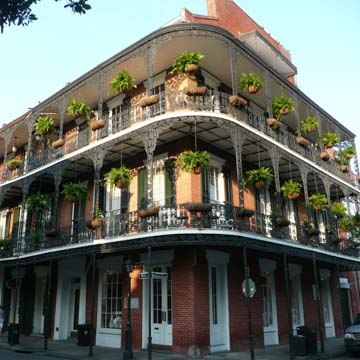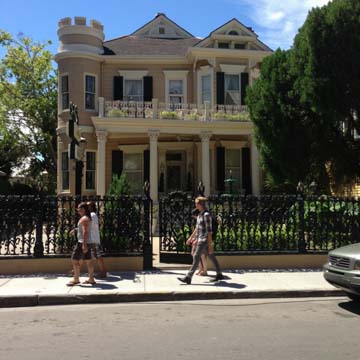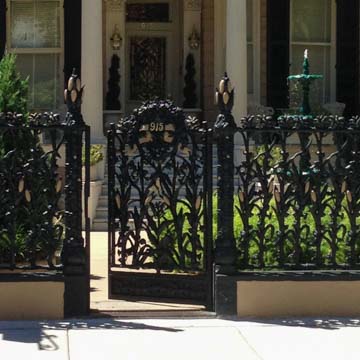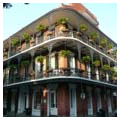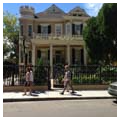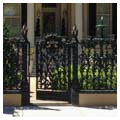The cast-iron galleries added to this group of brick three-story buildings illustrate the transformation undergone by many quite plain buildings in the Vieux Carré in the mid-nineteenth century. Ornamental cast iron was manufactured by several companies in New Orleans, reaching its peak of popularity in the 1850s, when the city had become a center for cast-iron work. Complex and naturalistic patterns were preferred, such as these representing oak leaves and acorns. The houses, acquired by the Miltenberger family in 1854, were occupied by the Miltenberger brothers, who were engaged in the ironwork industry. The raised tomb for the Miltenberger family in Greenwood Cemetery (see OR197) is made entirely of cast iron.
Opposite at 915 Royal is one of New Orleans’s three cast-iron fences with a cornstalk pattern (one surrounds the Robert Short House [OR145] and the other at 1206 N. White has cornstalk-decorated posts). The design of the c. 1850 fence on Royal Street represents cornstalks entwined with morning-glory vines. From this spot on Royal Street looking toward the Central Business District, a view of the fifty-one-story One Shell Square building (OR108) makes abundantly clear the sharp contrast between the low-rise, highly textured surfaces of the Vieux Carré and the crisp verticality of the business district just a few blocks away.


